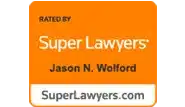Wrongful Eviction
San Francisco Wrongful Eviction Lawyers
A wrongful eviction occurs when a landlord evicts a tenant in violation of a local rent ordinance or California State Law. In San Francisco, Oakland, Berkley and other cities with a local ordinance a landlord can only evict a tenant with a “just cause” for eviction.
If you have been dealing with a problem in your home that is making your living situation unbearable and are constructively evicted contact us today to discuss your options.

over
35
years of experience in representing tenants.
Common Wrongful Eviction Situations
Tenants who have been wrongfully evicted may be entitled to substantial monetary damages. Our office has successfully represented hundreds of Bay Area tenants in lawsuits against landlords. We have recovered millions of dollars on behalf of tenants in the process. You have rights. Don’t let your landlord bully you out of your home without a fight.
If your landlord has wrongfully evicted you or is threatening to do so contact us to see how we can help.
- Your landlord has evicted you without a “just cause” for eviction
- Your landlord evicts you pursuant to an Owner Move-In or Relative Move-In and never moves in; does not continue to live in the unit for the required amount of time; or re-rents the unit to a new tenant.
- Your landlord locks you out of your home
- Your landlord evicts you without going through the legal eviction process.
- Your landlord fails to offer you the right to move back in after a temporary eviction
- Your landlord rents out your rent-controlled apartment to a new tenant following an Ellis Act Eviction
How Do I Know What My Rights Are?
What is My Case Worth?
How Much Will it Cost Me to Hire Wolford Wayne?
How Do I Know What My Rights Are?
Now that California has a new statewide law protecting renters, more tenants than ever are entitled to eviction protections. The kind of protection you have still depend heavily on what city/county you live in and the type of building you live in. To figure out your rights consider:
- Talking to a qualified tenant’s rights lawyer in your area
- Find a local tenant’s union/renter’s rights organization
- Look on your city’s website
Whatever you do, if your landlord is telling you to move, DO NOT MOVE OUT until you have spoken to a qualified professional about your options.
What is My Case Worth?
Every case is different and lawyers are prohibited from telling a potential client what their case is worth. However, you may be entitled to substantial financial damages if you have been forced out of your home due to the actions or inactions of your landlord.
Damages in a constructive or wrongful eviction lawsuit include: overpayment of rent; rent differential damages (difference between rent paid and market rate); emotional distress; and out-of-pocket moving fees, among others. In cities such as Oakland and San Francisco, tenants may be entitled to a multiplier on their damages with a showing of bad faith. Tenants are also entitled to attorney’s fees and costs.
How Much Will it Cost Me to Hire Wolford Wayne?
We recognize that most tenants cannot afford to pay thousands of dollars out of pocket to a lawyer. That is why we represent tenants in constructive eviction lawsuits on a contingency fee basis. A contingency fee means we only get paid when you do. This means you do not have to have money to seek justice. We only get paid if and when you do.
Eviction Laws and Procedures
The San Francisco Rent Ordinance provides eviction protections for tenants living in buildings covered by the ordinance. There are sixteen “just causes” for eviction. Most of these are considered for cause – that is, they require an allegation that a tenant did something wrong. There are also limited options for “no fault” evictions which do not require that a tenant have done something wrong as explained below.
Just Cause Requirements
The first requirement for a lawful eviction is a “just cause.” San Francisco’s Rent Ordinance states that landlords can only evict tenants for named just causes, such as:
- Non-Payment of Rent: The tenant fails to pay rent when it’s due.
- Breach of Lease: A material violation of terms of the rental agreement or lease, such as using the unit for a commercial purpose or Airbnb-ing the unit out.
- Nuisance: The tenant is causing a nuisance or substantial damage to the property or is creating significant interference with other tenants.
- Illegal Use: The tenant is using the unit for illegal purposes.
- Failure to Sign Lease Renewal: The tenant refuses to sign a similar rental agreement upon its expiration.
- Owner or Relative Move-In: The landlord or their close relative, under certain conditions, intends to move into the rental unit. This is often known as an “Owner Move-In” (OMI) or “Relative Move -In” (RMI) eviction.
- Withdrawal of the Property from Rental Market: Known as the Ellis Act, this allows landlords to evict tenants if they plan to remove the property from the rental market permanently.
- Temporary Eviction for Capital Improvements or Substantial Rehabilitation: The landlord plans to carry out substantial renovations that cannot be completed while the unit is occupied. These must be necessary, not merely cosmetic improvements.
- Lead Remediation or Seismic Work: For public health or safety reasons, such as lead paint removal or seismic retrofitting, requiring temporary vacancy.
- Good Samaritan Status Expiration: If the tenant was originally given a temporary, reduced rent under “Good Samaritan” status, and the agreed-upon term has ended.
It’s important for tenants facing eviction under these “just cause” reasons to understand their rights and the specific procedures that landlords must follow. In order to pursue a lawful eviction Landlords must allege that they have a just cause.
The Eviction Process
If your landlord has just cause, then they can begin the eviction process. However, there’s still a long way to go before they can legally remove you from your home. Let’s break down the lawful eviction process step by step:
- The Eviction Notice: First, the landlord must provide a written notice to the tenant. The duration of this notice varies depending on the reason for eviction. For non-payment of rent, violating the lease, or illegal activity, they must provide a three-day notice. For no-fault evictions, such as an Owner Move-in Eviction, the notice period is sixty days.
- The Notice Period: Once a tenant has been served with an eviction notice identifying a “just cause” for eviction, the tenant has a choice to make: move out during the notice period, “cure” the notice, if applicable by resolving the alleged issue, or staying put. What option is best for you will depend on the circumstances.
- Filing an Unlawful Detainer: While some notices must provide the tenant the opportunity to “cure” the violation, such as with a failure to pay rent, other violations allow landlords to give a notice to quit without an opportunity to cure. If the tenant doesn’t comply with the notice, such as by failing to pay rent or moving out of the property during the notice period, the landlord can then file an eviction lawsuit, known as an Unlawful Detainer lawsuit after the notice period ends.
- Service of Summons and Complaint: Once an eviction lawsuit has been filed the landlord can have the tenant is served with the summons and complaint.
- Tenant’s Response: The tenant has five calendar days to respond to the lawsuit, usually in the form of an Answer. If the tenant fails to respond, the landlord may win by default. Note that the time to respond may be impacted by weekends and holidays.
- Court Hearing and Judgment: Assuming that the tenant files an Answer to the Complaint, the Court will set a trial date and a mandatory settlement conference date. If the parties are unable to resolve the case prior to trial, then the Court will hold either a jury or bench trial to determine if the tenant can be evicted.
- Appeal Process: The tenant can try and stay or appeal the court’s decision, but this does not automatically stop the eviction process unless it is granted.
- Writ of Possession: If the landlord wins, they can obtain a judgment and a Writ of Possession from the court, which gives the tenant a few days (usually 5) to leave voluntarily.
- Lockout: If the tenant doesn’t leave, the sheriff will post a final notice and then perform a lockout, physically removing the tenant from the property.
Get Started
For more information or to discuss your legal situation, call us today at (415) 649-6203 for a phone consultation or submit an inquiry below. Please note our firm can only assist tenants residing in San Francisco, Oakland & Berkeley.














